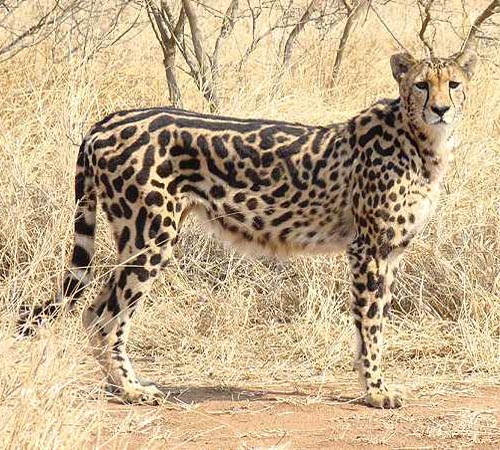Human activity possible reason for plummeting Cheetahs
 Washington, Oct 3 - A new study has revealed that it might have been human activity which is responsible for the decline in number of cheetahs.
Washington, Oct 3 - A new study has revealed that it might have been human activity which is responsible for the decline in number of cheetahs.
A landmark study of over ten years has suggested that barricading of forests and protected areas have been reducing the potential of Cheetahs in the area, to hunt for their prey. In the process, the animal numbers were rapidly dropping down.
The traditional view was that there must be a strong competition for food from other mammals of same or larger size, including hyenas and lions for example, that reduce the number of preys and in turn hungry Cheetahs were dying out. But, in the first study of its kind from Queen's, other Universities and conservation institutions have made the surprising discovery that, in the main, cheetahs did not use significantly more energy than other, similar-sized mammals.
Lead researcher Dr Michael Scantlebury studied 19 free-roaming cheetahs each for two weeks across two sites in southern Africa, one in the Kalahari Desert and the other in a wetter area. They injected heavy water into the animals before tracking them continuously and collecting their faeces. From these samples, they were able to determine how much of this heavy water they were losing each day and calculate their energy expenditures.
The research found that the cats' major energy costs seemed to be incurred by travelling, rather than securing prey. They could walk up and down sand dunes in high temperatures day in, day out, with no water to drink and yet remained remarkably adapted and resilient.
The reality may be that human activities were forcing cheetahs to travel ever-increasing distances and that this may be compromising their energy more than any other single factor.
The research paper is published in the international journal Science. (ANI)